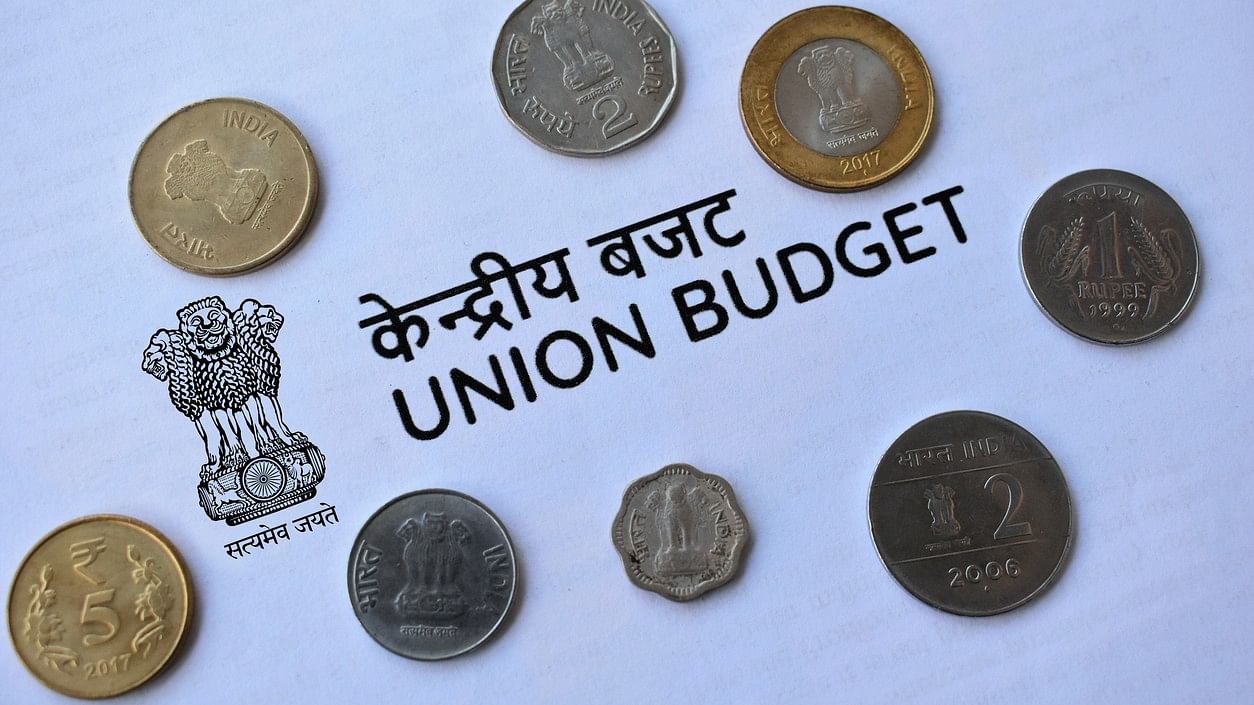
An image showing the GoI logo, coins, and the words 'Union Budget'. For representational purposes.
Credit: iStock Photo
Finance Minister Nirmala Sitharaman will present the Union Budget on July 23, having already presented an Interim Budget ahead of the Lok Sabha elections. In light of the upcoming Budget, we take a look at some trivia.
Over the past seven decades, several ministers have presented Budgets that have helped shape India’s economy. Decisions made by finance ministers in the Budget have had a long-lasting impact on the country’s economic trajectories. Here’s a list of some of the key budgets since Independence:
1. The First Budget (1947): Independent India’s first finance minister R K Shanmukhan Chetty presented the first Budget on Nov. 26, 1947. There was a large burden on this Budget owing to expenditures related to rehabilitation of refugees post Partition and payment of subsidies for foodgrains. The Budget revenue was Rs 171.15 crore and the expenditure was Rs 197.39 crore.
2. The Wealth Tax Budget (1957): The Budget, presented by T T Krishnamachari, is often remembered for the introduction of the Wealth Tax. The tax levied on the total value of personal assets existed in some form or another for the next six decades. It was during the 1957 Budget when the import licensing system was introduced that put severe restrictions on imports. The excise rate was increased to a whopping 400 per cent in this Budget.
3. People-sensitive Budget (1968): The Budget was presented by Finance Minister Morarji Ranchhodji Desai. The Budget was known as a people-sensitive one because it ended the requirement of stamping and assessment of goods by Excise Department authorities. It introduced a system of self-assessment by all big and small manufacturers, which is still in use. The move made the process simpler and boosted manufacturing.
4. The Black Budget (1973): In his Budget speech on Feb. 28, 1973, the then finance minister Yashwantrao B Chavan announced the nationalisation of coal mines. The decision, many believe, had an adverse effect on coal production over the years. Bundling of coal assets under a single government-owned entity meant there was no scope for competition in the market. India has since been an importer of coal.
5. The Epochal Budget (1991): The Budget, presented by former Prime Minister Manmohan Singh, holds significance as it was presented while the country was facing an economic crisis. The Budget, presented during the Narasimha Rao government, marked the beginning of economic liberalisation. It was in this Budget that India took its first steps into globalisation. Import licensing was slashed and exports were promoted.
6. The Dream Budget (1997): The Budget, presented by the then Finance Minister P Chidambaram, reduced personal income tax rates from 40 per cent to 30 per cent and cut corporate tax rates. It laid down a roadmap for economic reforms in India and introduced a scheme for the prevention of black money.
7. The Millennium Budget (2000): The Budget, presented by Yashwant Sinha, phased out Manmohan Singh's incentive for software exporters and led to an exponential growth of the Indian IT industry. India was also promoted as a software development hub.
8. The Aam Aadmi Budget (2005): The Budget, presented by former Finance Minister P Chidambaram, came to be known as the Aam Aadmi Budget because the Mahatma Gandhi National Rural Employment Guarantee Scheme (MNREGA) was introduced. The scheme pledged to provide 100 days of employment to all unemployed people. The Budget also included lower corporate tax rates and customs duty. The Right to Information was also introduced, which gave the common man access to seek timely responses from government entities.
Union Budget 2024 | Making a record for any Finance Minister, Nirmala Sitharaman will be presenting her 7th Union Budget on July 23, 2024 under the Modi 3.0 government. While inflation has burnt a hole in the pockets of 'aam janata', will this Budget spell relief for Indians? Track the latest coverage, live news, in-depth opinions, and analysis only on Deccan Herald. Also follow us on WhatsApp, LinkedIn, X, Facebook, YouTube, and Instagram.